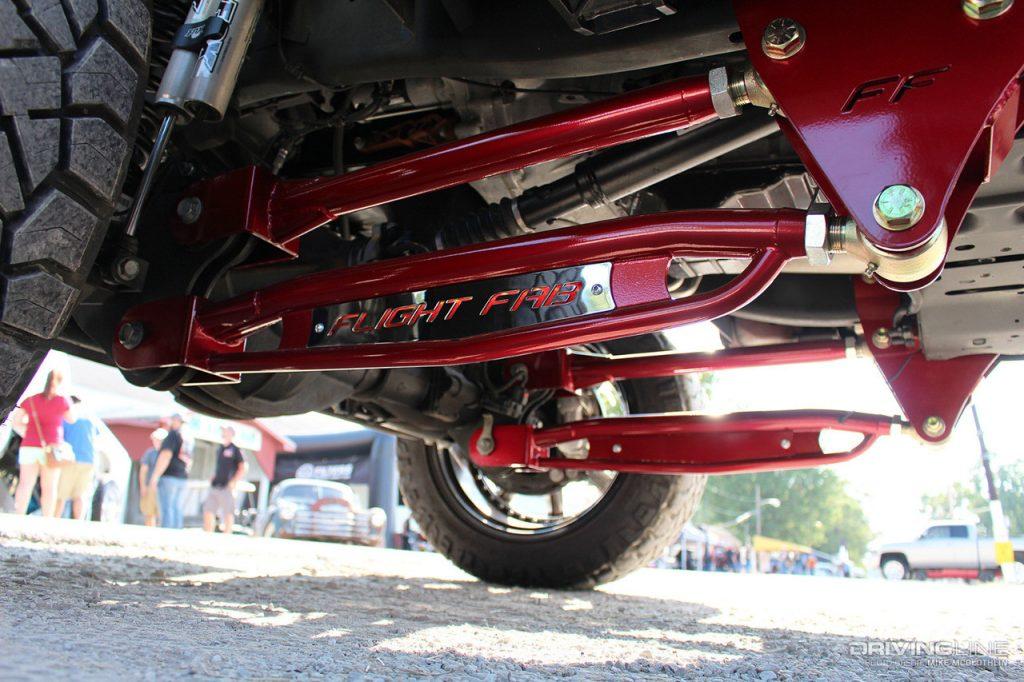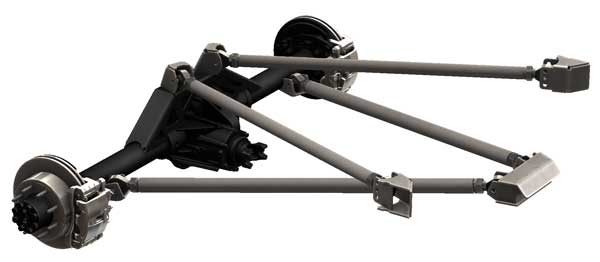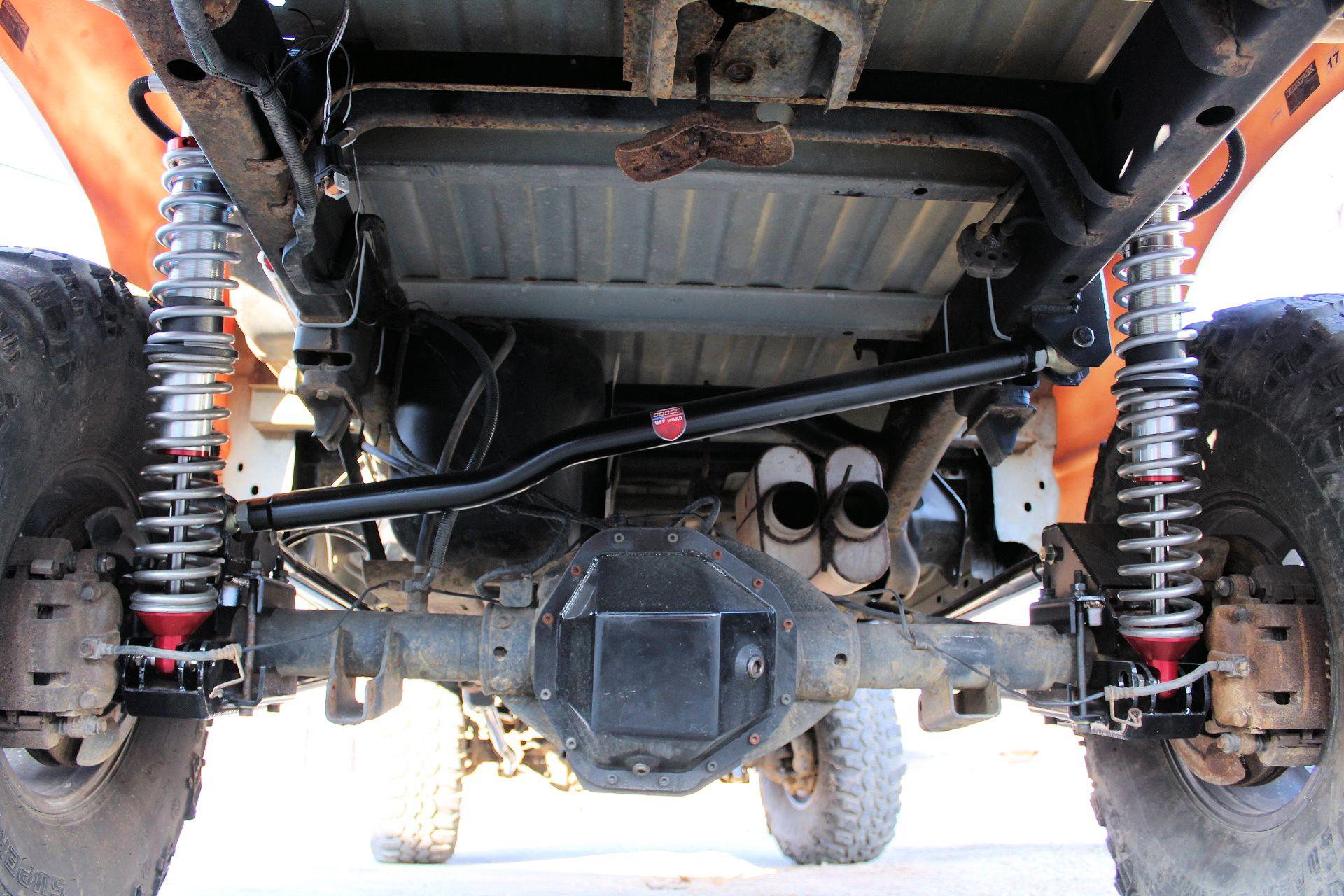A 4-link suspension is an automotive suspension system that uses four separate links to control the movement of a vehicle's suspension components. It provides superior control of the vehicle's suspension geometry, improving handling, stability, and ride quality. This suspension system is commonly found on modern performance vehicles and is becoming increasingly popular in the aftermarket auto industry.
Table of Contents
READ: Best G Body Racing Suspension: A Comprehensive Overview
The 4-Link Suspension System

The 4-link suspension system comprises four independent links connected to the vehicle's frame and suspension components. These links are typically connected with ball joints and rubber bushings and are adjusted to control the suspension's geometry.
The four links form a parallelogram-like shape, with the two outer links connected to the frame and the two inner links related to the suspension components. This allows for a wide range of adjustability, which makes it possible to optimize the suspension for different driving conditions.
Benefits of a 4-Link Suspension

The 4-link suspension system provides several advantages over traditional suspension systems. It offers superior suspension geometry control, improving handling, stability, and ride quality. The independent links allow for more precise suspension tuning, benefiting vehicles driven in various conditions.
Additionally, the 4-link system is generally easier to install than other suspension systems, making it a popular choice for aftermarket installations.
Disadvantages of a 4-Link Suspension
As with any suspension system, the 4-link system has some drawbacks. It can be challenging to adjust, as it requires multiple alignment tools. The 4-link system is more expensive than traditional suspension systems, and the parts can be challenging to find.
Finally, the 4-link system is more complex than other suspension systems so it may require more maintenance and repairs.
Difference Between a 4-Link and 3-Link Suspension

The difference between a 4-link and 3-link suspension system is an essential consideration for those who want to upgrade their vehicles or install a new suspension system. While both suspensions provide stability, the 4 link suspension offers more flexibility and control regarding ride quality and vehicle handling.
Differences in Structure
A 4 link suspension typically consists of four links connected to the frame and the axle. The four links are arranged in a trapezoidal pattern, with two links running from the frame to the axle and two from the axle to the frame. This design allows for independent articulation of the axle for better handling and more precise control of the vehicle's ride quality and handling.
A 3-link suspension, on the other hand, consists of three links connected to the frame and the axle. The three links are arranged in a triangular pattern, with one link running from the frame to the axle and two from the axle to the frame. This design does not allow for independent articulation of the axle and limits the amount of control that can be achieved when adjusting the vehicle's ride quality and handling.
READ: How to Choose the Best LS Truck Cam for Your Vehicle
Differences in Performance
The performance of a 4-link suspension is typically superior to that of a 3-link suspension. This is due to the independent articulation of the axle, which allows for more precise control of the vehicle's Ride Quality and Handling. This can be beneficial for cars that are used for racing or those that need improved performance.
A 3-link suspension, on the other hand, is not able to provide the same level of control as a 4-link suspension. This can be a significant limitation for those looking to upgrade their vehicle's suspension system for improved performance.
Differences in Installation
The installation of a 4-link suspension is typically more complex than a 3-link suspension. This is due to the additional components that need to be installed and the need for precise alignment of the links to ensure proper performance.
A 3-link suspension is usually simpler to install than a 4-link suspension. This can be beneficial for those looking for an easy way to upgrade their vehicle's suspension system without needing specialized tools or expertise.
Differences in Maintenance
Maintaining a 4-link suspension is typically more complex than a 3-link suspension. This is due to the additional components that need to be inspected and adjusted and the proper alignment of the links to ensure optimal performance.
A 3-link suspension is usually simpler to maintain than a 4-link suspension. This can be beneficial for those looking for an easy way to maintain their vehicle's suspension system without needing specialized tools or expertise.
Differences in Durability
The durability of a 4-link suspension is typically superior to that of a 3-link suspension. This is due to the independent articulation of the axle, which allows for more precise control of the vehicle's ride quality and handling. This can be beneficial for vehicles that are used for racing or those that need improved durability.
A 3-link suspension, on the other hand, is not able to provide the same level of durability as a 4-link suspension. This can be a significant limitation for those looking to upgrade their vehicle's suspension system for improved durability.
Installation of a 4-Link Suspension
Installing a 4-link suspension system is a somewhat involved process and should only be attempted by experienced mechanics. The first step is to mount the four links to the vehicle's frame and suspension components. This requires specialized tools and equipment and a thorough understanding of suspension geometry.
Once the links are correctly mounted, they must be adjusted to the correct angles to optimize the suspension geometry.
READ: Everything You Need to Know About LS Turbo Camshafts
Conclusion
A 4-link suspension system is a type of automotive suspension system that offers superior control of the suspension geometry, allowing for improved handling and stability, and ride quality. The system comprises four independent links connected to the vehicle's frame and suspension components.
The 4-link system offers several advantages over traditional suspension systems, although it can be challenging to install and may require more maintenance and repairs. For those experienced with suspension installation, the 4-link system can be an excellent choice for improving handling and ride quality.

